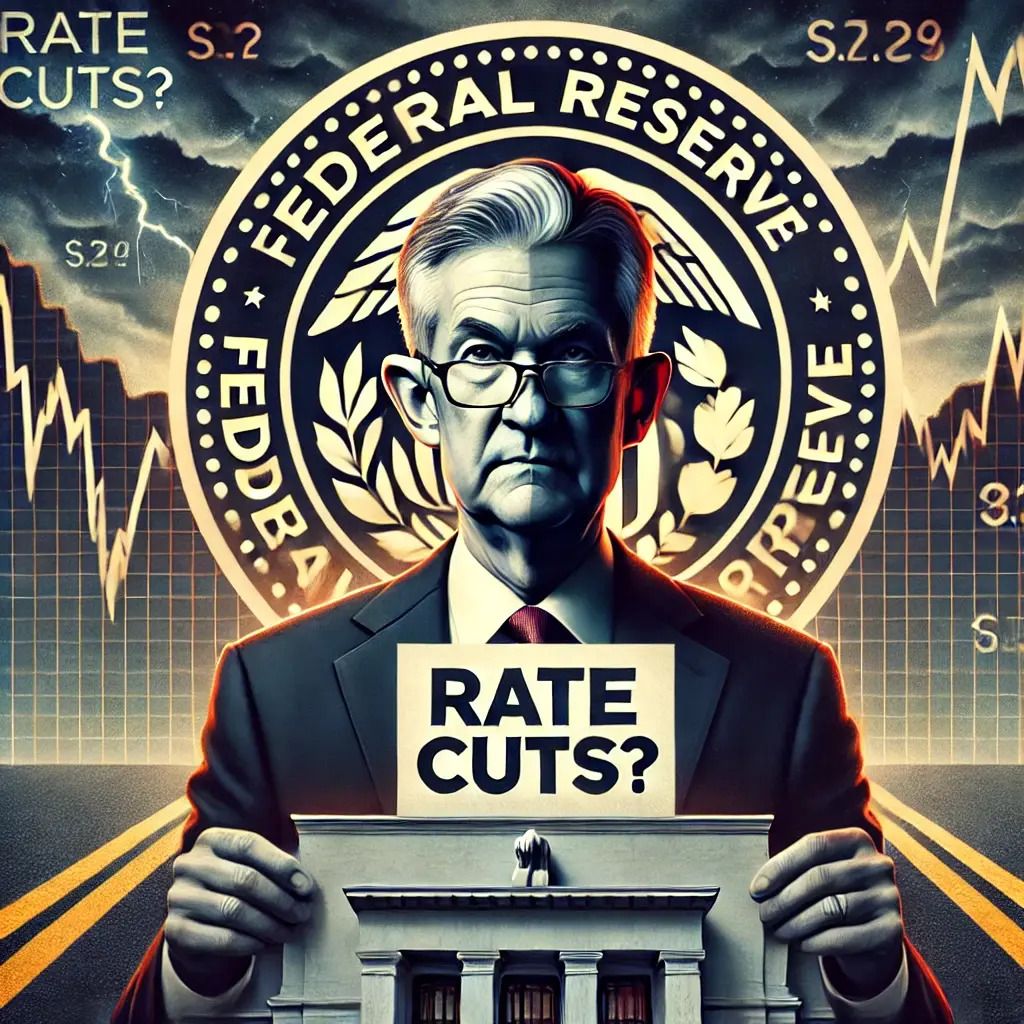Key Points
The Federal Reserve is expected to hold rates steady, but Powell’s forward guidance will shape risk sentiment.
The dot plot and balance sheet adjustments could be the real market-moving factors.
Rate cuts aren’t a guarantee, despite what traders have priced in for later this year.
Market volatility is inevitable—the Fed’s messaging could fuel the dollar or trigger a broader risk-on shift.
The Fed’s Next Move: The Moment of Truth for Traders
Screens are glowing. Traders are locked in. The FOMC statement is about to drop, and the market is acting like this is the final chess move in some grand economic showdown.
But what if Powell isn’t playing the same game?
Yes, the Fed is likely holding rates steady, but the real action isn’t in whether rates stay at 4.25%-4.50%. The real game is how Powell frames the future, and whether traders are mispricing what’s coming next.
Will the dot plot reinforce market expectations of two rate cuts?
Will Powell push back, signaling rates could stay higher for longer?
How will the Fed's balance sheet policy impact liquidity and asset prices?
This isn’t just a rate decision—it’s a narrative battle between what traders want and what the Fed is willing to give.
What’s Really Driving the Market?
1. The Rate Cut Mirage – Are Markets in Denial?
Let’s be honest, traders have been screaming for rate cuts for months.
But if you’ve been listening to Powell, he’s been pushing back on that idea hard. The data simply hasn’t justified an immediate pivot:
The labor market is still tight. Unemployment remains low, and wage growth hasn’t collapsed.
Economic growth isn’t tanking. If anything, GDP numbers have been resilient.
Inflation is sticky. It’s down from peak levels but still above the Fed’s 2% target.
Yet, markets keep hoping Powell will give in.
Here’s the problem: If Powell signals that the Fed isn’t in a rush to cut, risk assets could face a rude awakening.
Stocks and high-beta currencies (AUD, NZD) could take a hit.
Gold, which has been riding the “Fed will cut” narrative, may face a correction.
The U.S. dollar could surge as traders unwind premature rate-cut bets.
This disconnect between market expectations and Fed policy is where volatility gets interesting.
2. The Dot Plot Drama – The Market’s True Tell
The dot plot is where the Fed reveals its hand, at least, what they want traders to believe.
Markets are pricing in two rate cuts in 2025. But what happens if Powell and his crew decide that’s too aggressive?
Here’s what traders need to watch:
If the median dot plot still projects two cuts in 2025, markets will breathe a sigh of relief.
If the Fed trims it to one cut—or removes cuts entirely—expect the dollar to surge.
If inflation projections tick higher, Powell could reinforce a “higher-for-longer” stance.
Potential Market Reaction:
A hawkish dot plot = stronger USD, weaker stocks & gold.
A neutral dot plot (holding at two cuts) = a mixed reaction, likely short-term volatility.
A dovish dot plot (hinting at more cuts) = risk assets rip higher, dollar weakens.
3. Balance Sheet – The Fed’s Quiet Weapon
While everyone focuses on rates, the Fed’s balance sheet policy is a stealth market mover.
There’s been talk about whether the Fed will pause its quantitative tightening (QT)—essentially injecting more liquidity into markets.
Why does this matter?
If the Fed slows its balance sheet runoff, risk assets (stocks, gold, crypto) could rally on liquidity inflows.
If QT remains full-speed ahead, liquidity tightens, and USD stays strong.
This is the X-factor that most traders ignore.
Market Scenarios – How It Could Play Out
With these factors in mind, here are three likely scenarios and how traders should prepare:
Scenario 1: Powell Stays Cautious (Baseline Expectation)
The Fed holds rates steady.
Powell acknowledges inflation progress but warns against premature cuts.
The dot plot remains at two cuts in 2025.
Possible Market reaction:
• USD holds steady.
• Gold trades between $2,980-$3,050.
Scenario 2: The Hawkish Surprise (USD Rips Higher)
The Fed pushes rate cuts further into late 2025.
Inflation projections tick higher.
Powell signals more concern about inflation than growth.
Possible Market reaction:
• USD rallies hard.
• Gold corrects lower, possibly toward $2,950.
Scenario 3: The Dovish Shock (Risk-On Rally)
The Fed hints at earlier cuts.
Inflation projections are revised lower.
Powell acknowledges economic softening.
Possible Market reaction:
• Risk assets surge (stocks, gold, high-beta currencies).
• The dollar tumbles.
• Treasury yields drop, fueling rate-cut bets.
How to Trade the FOMC Decision
1. Follow the Dollar’s First 10-Minute Reaction
Forget the noise, watch the USD.
If the dollar spikes, risk assets will likely sell off.
If the dollar drops, expect a risk-on rally.
2. Stay Flexible with Gold
Above $3,000? Bullish continuation likely.
Below $2,980? Possible correction toward $2,950.
3. Watch Bond Yields for Confirmation
Yields dropping = markets expect cuts.
Yields rising = Powell just shut that down.
Final Thoughts: The Second Move is the Real Trade
Every trader knows the FOMC meeting is a volatility event, but it’s not always the initial reaction that matters.
The second move, when traders digest Powell’s messaging, is where the real trade happens.
The Fed isn’t here to rescue markets. They’re here to balance inflation, employment, and growth. The traders who anticipate, not just react, will come out ahead.
What’s your play? Are you positioned smartly, or about to get caught chasing the wrong move?
Key Takeaways
The Fed’s tone will dictate risk sentiment, watch the dot plot and balance sheet policy.
Rate cuts aren’t guaranteed; traders need to stay flexible.
The USD’s first reaction will dictate market direction, follow its move.
Gold’s fate hinges on Powell’s tone, $3,000 remains the battleground.

